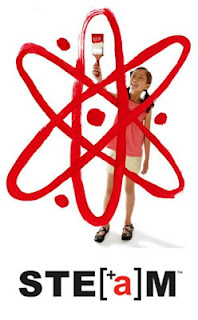Welcome! This blog is dedicated to relaying art information for Oak Grove Elementary School. Note that the latest art information as of the school year 2023-2024 is available on Schoology.
Pages
▼
Tuesday, December 18, 2012
New Art Activites and Games
As you spend time enjoying the Holiday recess time, you may want to explore these art activities while you have extra time at home:
Saturday, December 8, 2012
Tuesday, December 4, 2012
New Projector
The projector that DonorsChoose.org donated has helped my students explore more thoroughly designs and drawing techniques, which are available on the Internet.
Please consider helping my art class with further donations using this link:
Please consider helping my art class with further donations using this link:
Art Club Schedule 2012-2013
These are tentative dates which fall on the last Wednesday of each month for after school meetings. The schedule is from 2:00 pm to 3:00 pm. Art club students may come to the art room during school hours when their homeroom teacher permits it.
|
Month
|
Dates
|
January
|
30
|
February
|
27
|
April
|
24
|
May
|
29
|
Additionally, beginning with the month of March we will meet each working school Monday from 3:00pm to 4:00pm.
Please keep this schedule handy for reference. I will communicate cancellations, if there are any, as soon as possible.
Ms. Wawa
Monday, November 26, 2012
Friday, November 16, 2012
Tuesday, November 6, 2012
Saturday, October 20, 2012
Parents, please consider helping our art classroom by clicking here:
 |
| My Teacher Page at DonorChoose.org |
Saturday, October 13, 2012
Wednesday, October 3, 2012
Parents, please read this article:
(S=Science,
T=Technology, E=Engineering, a=art, M=Mathematics)
"With
global competition rising, America is at a critical juncture in defining its
economic future. I believe that art and design are poised to transform our
economy in the 21st century in the same way that science and technology did in
the last century, and the STEAM movement is an opportunity for America to
sustain its role as innovator of the world."
Ten Lessons The Arts Teach
Ten Lessons The Art Teach
by Eliot Eisner
1. The arts teach
children to make good judgments about qualitative relationships. Unlike much of
the curriculum in which correct answers and rules prevail, in the arts, it is
judgment rather than rules that prevail.
2. The arts teach
children that problems can have more than one solution and that questions can
have more than one answer.
3. The arts celebrate
multiple perspectives. One of their large lessons is that there are many ways
to see and interpret the world.
4. The arts teach
children that in complex forms of problem solving purposes are seldom fixed,
but change with circumstance and opportunity. Learning in the arts requires the
ability and a willingness to surrender to the unanticipated possibilities of
the work as it unfolds.
5. The arts make vivid
the fact that neither words in their literal form nor number exhaust what we
can know. The limits of our language do not define the limits of our cognition.
6. The arts teach
students that small differences can have large effects. The arts traffic in
subtleties.
7. The arts teach
students to think through and within a material. All art forms employ some means through which
images become real.
8. The arts help children
learn to say what cannot be said.
When children are invited
to disclose what a work of art helps them feel, they must reach into their
poetic capacities to find the words that will do the job.
9. The arts enable us to
have experience we can have from no other source and through such experience to
discover the range and variety of what we are capable of feeling.
10. The arts’ position in
the school curriculum symbolizes to the young what adults believe is important.
Friday, September 28, 2012
Saturday, September 22, 2012
Sunday, August 19, 2012
Wednesday, May 16, 2012
Some of the World's Most Famous Paintings
One of the highest honors for an artist is to be considered and regarded as a master. They desire to produce artwork that is remembered forever. The following are the most famous paintings of all time, recognized by many folks who hail from all the corners of the world.
Click on these links for details: Famous Paintings , a list of the top 20 and World Famous Paintings.

Mona Lisa by Leonardo da Vinci
Click on these links for details: Famous Paintings , a list of the top 20 and World Famous Paintings.
Mona Lisa by Leonardo da Vinci
Tuesday, May 15, 2012
Last Meeting of the Year!!!!
The Art Club will hold its last meeting Wednesday May 16 from 2:00pm to 3:00pm.
At 2:00 pm, please show up with your art club member cards and line up in front of the art room #803. Also bring all your artwork with you.
If you cannot stay, you can either pass by for 5 minutes or come to the art room later during the week.
Let's finish the year with a Bam!!!!
I thank you for your attention.
Ms. Wawa
Monday, April 23, 2012
Meeting Cancelled
Unfortunately our scheduled meeting has been cancelled as per the school's administration. However, please continue to work on your art projects for the end of the year show. As you finish them please bring them over to the art room. It is really important that you get to have at least one piece of art work entered at the end of the year art show.
See me at the art room if you need further details or clarifications.
Ms. Wawa
See me at the art room if you need further details or clarifications.
Ms. Wawa
Thursday, April 12, 2012
Next Meeting
The Art Club will be meeting this Wednesday April 25 from 2:00pm to 3:00pm.
At 2:00 pm on Wednesday, please show up with your art club member cards and line up in front of the art room #803. Also bring all your artwork with you.
Make sure that you only stay if your parents know that you are going to leave at 3:00 pm.
I thank you for your attention.
Ms. Wawa
Wednesday, March 28, 2012
History of Art Resources
The history of art is immense, the earliest cave paintings pre-date writing by almost 27,000 years! If you're interested in art history, the first thing you should do is take a look at this table which briefly outlines the artists, traits, works, and events that make up major art periods and how art evolved to present day:
Reference:
Art Periods/
Movements |
Characteristics
|
Chief Artists and Major Works
|
Historical Events
|
Stone Age (30,000 b.c.–2500 b.c.)
|
Cave painting, fertility goddesses, megalithic structures
|
Lascaux Cave Painting, Woman of Willendorf, Stonehenge
|
Ice Age ends (10,000 b.c.–8,000 b.c.); New Stone Age and first permanent settlements (8000 b.c.–2500 b.c.)
|
Mesopotamian (3500 b.c.–539 b.c.)
|
Warrior art and narration in stone relief
|
Standard of Ur, Gate of Ishtar, Stele of Hammurabi's Code
|
Sumerians invent writing (3400 b.c.); Hammurabi writes his law code (1780 b.c.); Abraham founds monotheism
|
Egyptian (3100 b.c.–30 b.c.)
|
Art with an afterlife focus: pyramids and tomb painting
|
Imhotep, Step Pyramid, Great Pyramids, Bust of Nefertiti
|
Narmer unites Upper/Lower Egypt (3100 b.c.); Rameses II battles the Hittites (1274 b.c.); Cleopatra dies (30 b.c.)
|
Greek and Hellenistic (850 b.c.–31 b.c.)
|
Greek idealism: balance, perfect proportions; architectural orders(Doric, Ionic, Corinthian)
|
Parthenon, Myron, Phidias, Polykleitos, Praxiteles
|
Athens defeats Persia at Marathon (490 b.c.); Peloponnesian Wars (431 b.c.–404 b.c.); Alexander the Great's conquests (336 b.c.–323 b.c.)
|
Roman (500 b.c.– a.d. 476)
|
Roman realism: practical and down to earth; the arch
|
Augustus of Primaporta, Colosseum, Trajan's Column, Pantheon
|
Julius Caesar assassinated (44 b.c.); Augustus proclaimed Emperor (27 b.c.); Diocletian splits Empire (a.d. 292); Rome falls (a.d. 476)
|
Indian, Chinese, and Japanese(653 b.c.–a.d. 1900)
|
Serene, meditative art, and Arts of the Floating World
|
Gu Kaizhi, Li Cheng, Guo Xi, Hokusai, Hiroshige
|
Birth of Buddha (563 b.c.); Silk Road opens (1st century b.c.); Buddhism spreads to China (1st–2nd centuries a.d.) and Japan (5th century a.d.)
|
Byzantine and Islamic (a.d. 476–a.d.1453)
|
Heavenly Byzantine mosaics; Islamic architecture and amazing maze-like design
|
Hagia Sophia, Andrei Rublev, Mosque of Córdoba, the Alhambra
|
Justinian partly restores Western Roman Empire (a.d. 533–a.d. 562); Iconoclasm Controversy (a.d. 726–a.d. 843); Birth of Islam (a.d. 610) and Muslim Conquests (a.d. 632–a.d. 732)
|
Middle Ages (500–1400)
|
Celtic art, Carolingian Renaissance, Romanesque, Gothic
|
St. Sernin, Durham Cathedral, Notre Dame, Chartres, Cimabue, Duccio, Giotto
|
Viking Raids (793–1066); Battle of Hastings (1066); Crusades I–IV (1095–1204); Black Death (1347–1351); Hundred Years' War (1337–1453)
|
Early and High Renaissance (1400–1550)
|
Rebirth of classical culture
|
Ghiberti's Doors, Brunelleschi, Donatello, Botticelli, Leonardo, Michelangelo, Raphael
|
Gutenberg invents movable type (1447); Turks conquer Constantinople (1453); Columbus lands in New World (1492); Martin Luther starts Reformation (1517)
|
Venetian and Northern Renaissance (1430–1550)
|
The Renaissance spreads north- ward to France, the Low Countries, Poland, Germany, and England
|
Bellini, Giorgione, Titian, Dürer, Bruegel, Bosch, Jan van Eyck, Rogier van der Weyden
|
Council of Trent and Counter-Reformation (1545–1563); Copernicus proves the Earth revolves around the Sun (1543
|
|
|
Art that breaks the rules; artifice over nature
|
Tintoretto, El Greco, Pontormo, Bronzino, Cellini
|
Magellan circumnavigates the globe (1520–1522)
|
Baroque (1600–1750)
|
Splendor and flourish for God; art as a weapon in the religious wars
|
Reubens, Rembrandt, Caravaggio, Palace of Versailles
|
Thirty Years' War between Catholics and Protestants (1618–1648)
|
Neoclassical (1750–1850)
|
Art that recaptures Greco-Roman grace and grandeur
|
David, Ingres, Greuze, Canova
|
Enlightenment (18th century); Industrial Revolution (1760–1850)
|
Romanticism (1780–1850)
|
The triumph of imagination and individuality
|
Caspar Friedrich, Gericault, Delacroix, Turner, Benjamin West
|
American Revolution (1775–1783); French Revolution (1789–1799); Napoleon crowned emperor of France (1803)
|
Realism (1848–1900)
|
Celebrating working class and peasants; en plein air rustic painting
|
Corot, Courbet, Daumier, Millet
|
European democratic revolutions of 1848
|
|
|
Capturing fleeting effects of natural light
|
Monet, Manet, Renoir, Pissarro, Cassatt, Morisot, Degas
|
Franco-Prussian War (1870–1871); Unification of Germany (1871)
|
Post-Impressionism (1885–1910)
|
A soft revolt against Impressionism
|
Van Gogh, Gauguin, Cézanne, Seurat
|
Belle Époque (late-19th-century Golden Age); Japan defeats Russia (1905)
|
Fauvism and Expressionism (1900–1935)
|
Harsh colors and flat surfaces (Fauvism); emotion distorting form
|
Matisse, Kirchner, Kandinsky, Marc
|
Boxer Rebellion in China (1900); World War (1914–1918)
|
Cubism, Futurism, Supremativism, Constructivism, De Stijl (1905–1920)
|
Pre– and Post–World War 1 art experiments: new forms to express modern life
|
Picasso, Braque, Leger, Boccioni, Severini, Malevich
|
Russian Revolution (1917); American women franchised (1920)
|
Dada and Surrealism (1917–1950)
|
Ridiculous art; painting dreams and exploring the unconscious
|
Duchamp, Dalí, Ernst, Magritte, de Chirico, Kahlo
|
Disillusionment after World War I; The Great Depression (1929–1938); World War II (1939–1945) and Nazi horrors; atomic bombs dropped on Japan (1945)
|
Abstract Expressionism (1940s–1950s) and Pop Art (1960s)
|
Post–World War II: pure abstraction and expression without form; popular art absorbs consumerism
|
Gorky, Pollock, de Kooning, Rothko, Warhol, Lichtenstein
|
Cold War and Vietnam War (U.S. enters 1965); U.S.S.R. suppresses Hungarian revolt (1956) Czechoslovakian revolt (1968)
|
Postmodernism and Deconstructivism (1970– )
|
Art without a center and reworking and mixing past styles
|
Gerhard Richter, Cindy Sherman, Anselm Kiefer, Frank Gehry, Zaha Hadid
|
Nuclear freeze movement; Cold War fizzles; Communism collapses in Eastern Europe and U.S.S.R. (1989–1991)
|

















